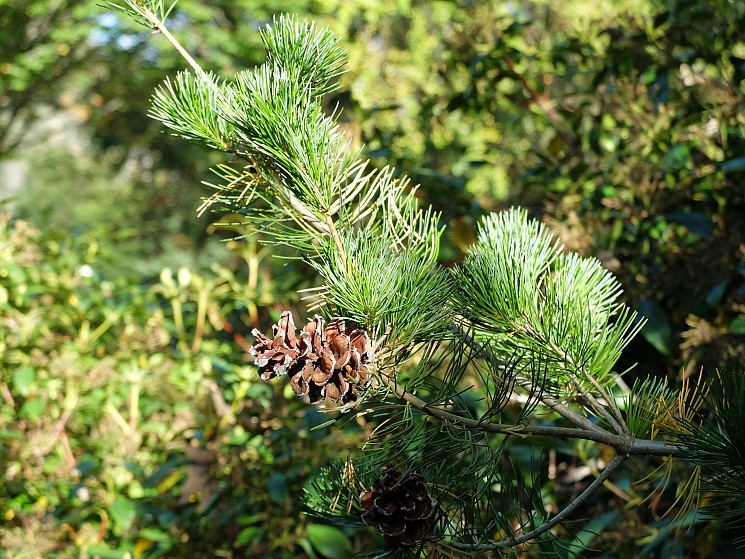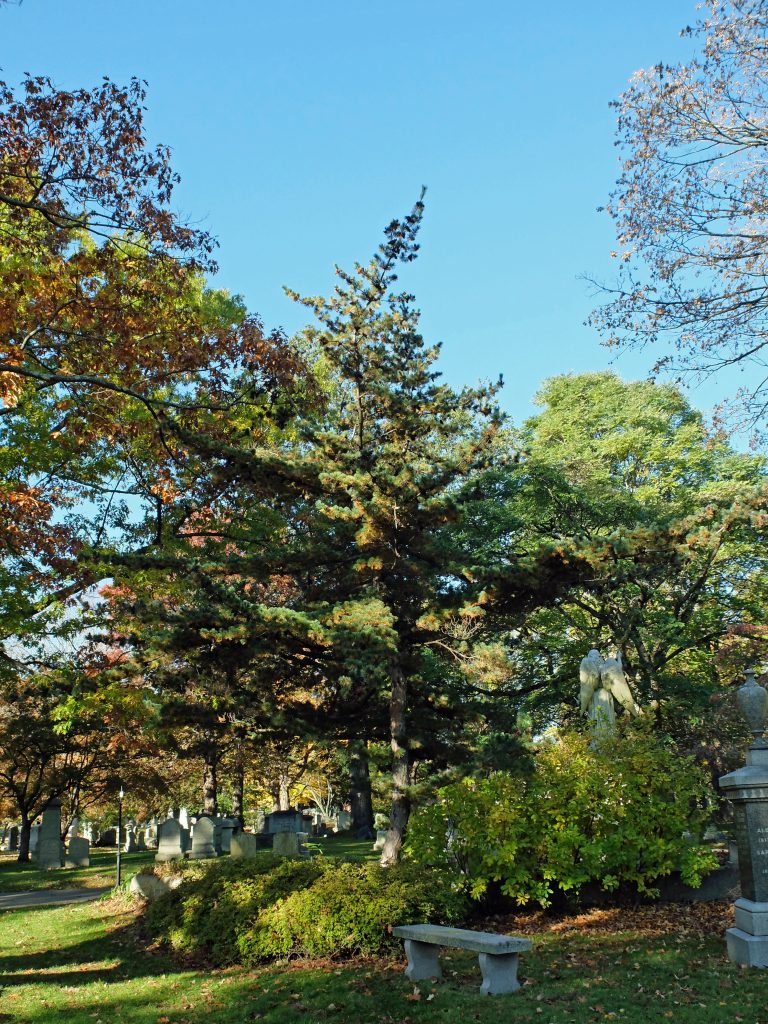Japanese White Pine

…the white pine that stands by the lake. Tall and dense, it’s a whistling crest on windy mornings. Otherwise, it’s silent. It looks over the lake and it looks up the road. I don’t mean it has eyes. It has long bunches of needles, five to each bundle. From its crown springs a fragrance, the air is sharp with it. Everything is in it. But no single part can be separated from another…
-Mary Oliver
Whenever I think of or hear the name Japanese White Pine, Pinus parviflora, an immediate image is of one with a great blue heron resting on a long horizontal branch spanning above the placid water of Auburn Lake, which created a mirrored reflection.
Mount Auburn currently grows about twenty Japanese White Pine, Pinus parviflora, throughout its landscape and no doubt other visitors have had memorable avian sightings within some of these trees. But these are choice, graceful, often picturesque trees when unaided by any wildlife enhancements.

Native to Japan and Korea these are small to medium size, twenty to fifty-feet high. This contrasts with our native Eastern White Pine, Pinus strobus, which easily reaches fifty to eighty feet high. Each of these Pinus species have needles occurring in fascicles (clusters) of five. Japanese White Pine needles are stiff, 1-2 ½-inches long and slightly twisted. Eastern White Pine needles are noticeably longer, 2-4-inches and by contrast soft and pliable.
Similarly with Pinus parviflora, the fruits are visually distinct cones 1 ½ – 4-inches long with broad, wedge-shaped scales, compared to longer Eastern White Pine cones at 3-7-inches, more linear and often having a curved shape.
The etymology comes from Latin, Pinus is the genus name for pines and parviflora means with small flowers. Traditional Japanese custom included using this wood for domestic implements and for some parts of household Buddhist alters (butsudan). These trees have also been frequently used for bonsai.
On a future visit to Mount Auburn look for some Japanese White Pine at Birch Garden, Sycamore Avenue, Walnut Avenue, Oak Knoll Path and Meadow Road among other locations. Of course I always look at my favorite on Rosebay Avenue overhanging Auburn Lake to recall and/or see another perched great blue heron.
A Reward
Tired and hungry, late in the day, impelled
to leave the house and search for what
might lift me back to what I had fallen away from,
I stood by the shore waiting.
I had walked in the silent woods:
the trees withdrew into their secrets.
Dusk was smoothing breadths of silk
over the lake, watery amethyst fading to gray.
Ducks were clustered in sleeping companies
afloat on their element as I was not
on mine. I turned homeward, unsatisfied.
But after a few steps, I paused, impelled again
to linger, to look North before nightfall-the expanse
of calm, of calming water, last wafts
of rose in the few high clouds.
And was rewarded:
the heron, unseen for weeks, came flying
widewinged toward me, settled
just offshore on his post,
took up his vigil.
If you ask
why this cleared a fog from my spirit,
I have no answer.
-Denise Levertov
Top right photo is of Japanese White Pine (Pinus parviflora) at Lake Towada, Japan. Copyright Friends and Fellows of Harvard University. All other photos copyright, Jim Gorman.









Leave a Reply